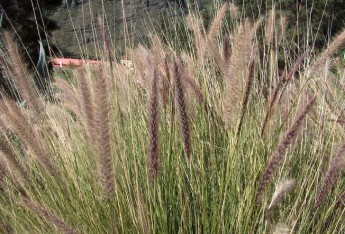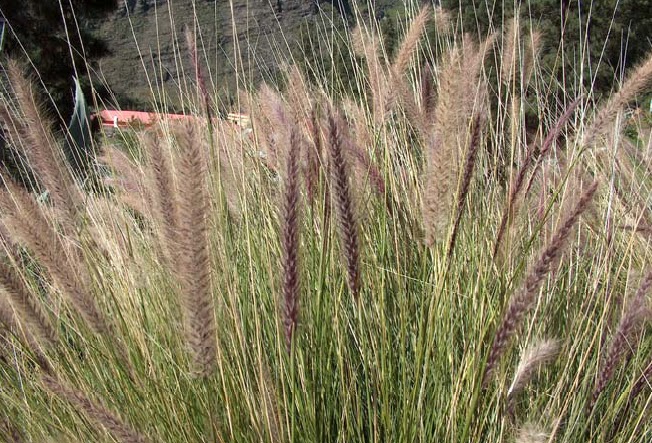 THE REGIONAL EXECUTIVE OBLIGES ALL PUBLIC ADMINISTRATIONS TO INFORM AND RAISE AWARENESS AMONG RESIDENTS OF THE AREA OF THE ACTIONS THAT IT WILL UNDERTAKE.
THE REGIONAL EXECUTIVE OBLIGES ALL PUBLIC ADMINISTRATIONS TO INFORM AND RAISE AWARENESS AMONG RESIDENTS OF THE AREA OF THE ACTIONS THAT IT WILL UNDERTAKE.
The Government of the Canary Islands has declared war on the cat's tail. Is a exotic plants invasive "more damaging to the natural and semi-natural environment" of the archipelago, and that already marks the landscape of the Islands.
Scientific name Pennisetum setaceum, "its spread has been very fast, Since its ornamental introduction dates back to the year 40 of the last century, and it has managed to grow in such a way that it currently holds more surface in the Canary Islands some of island vegetation features and exclusive, as for example the endemic Palm palmera canaria".
Thus this species presents the Department of sustainability of the regional Executive, in an order, published Tuesday in the official bulletin of the Canary Islands (BOC), Why approve technical guidelines for their management, control and elimination.
Among the measures envisaged, This Department requires all public administrations to inform and raise awareness among residents of the area of the performances will be rushing to make simultaneously eliminate the possible sources of dispersion of the species that can be found in its properties.
The cat's tail, or more popularly, rabogato, It spreads easily in environments of roads from where will be occupying the surrounding land, but also sits easily on degraded land and accumulations of land, as well as in areas altered or sparse vegetation.
Currently it is distributed from the halophilic coastline (Rocky shores and coastal cliffs in northern slope as South), up to the Midlands and funds of ravine above all in the lower part of the Islands.
He stresses the Government order, "prevention, early warning and quick action are the best strategy to achieve the eradication of the species on the Islands where their control is still affordable (Iron, La Gomera, Fuerteventura and Lanzarote), It is not only a necessity for the conservation of biodiversity and the natural heritage of these islands, but an obligation arising from legislation in force".
"On the Islands where the species is strongly installed (Tenerife, Gran Canaria and La Palma), measures should be mainly directed to stop its spread and carry out checks on areas of high conservation interest", designates the regional government.
In the Canary Islands has sought to control their populations on different islands, in line with similar experiences in other areas of the planet, and from which these guidelines have been developed.
The rabogato is included in the Spanish catalogue of invasive alien species, which is the general prohibition of possession, transport, traffic and Commerce of exemplary living or dead, his remains or propagules, including foreign trade.
Such is the threat posed by this species for the Canarian plants, the autonomous Parliament adopted in 2011 a resolution that urges the Government of Canary Islands, in partnership with councils and local councils, carry out concrete measures for the control and eradication of the Pennisetum setaceum.
Seeds are dispersed with ease by the wind, water drag, in the hair of animals and bird feathers, but also on the wheels of vehicles
These guidelines published in the BOC explains that it is a perennial herb whose tiller can live up to 20 years. Sleeves it is made up of dozens of issues each of which is capable of rooting with ease. Also emerges easily from root fragments which can measure up to 30 cm.
It has a high rate of vegetative reproduction by this mechanism and runners. It has a germination continued by what you will always find specimens with spikes (flowers) so staggered throughout the year. Is characterized by very high rates of seed production (up to 10.000 by plant) germinative capacity reaches the 6 years without difficulty.
Seeds are dispersed with ease by the wind, water drag, in the hair of animals and bird feathers, but also on the wheels of vehicles, with the movement of machinery, in the clothing and footwear. It has very fast growth, so three months can produce spikes even though it is already able to propagate vegetatively. It is resistant to cuts, trampling, to many herbicides and fire.
The Ministry has set standards to control its spread. Like this, first the Plantar floral parts must be disposed. We will try to perform the action in a period where bloom is not maximum or excessive wind since the fundamental intention of this first step is to avoid at all costs the dispersal of the seeds of the rabogato.
The best way is to carefully gather the stems of the plant, bagging her to superiorly by closing the bag at the bottom and then cut the fascicles.
When is this not possible by the size of the sample, the spikes are carefully cut with scissors and entered into bags avoiding the dispersion of seeds. To avoid this dispersion, the issue with which we work can be covered laterally with a semicylindrical plastic screen as those used in the application of herbicides.
To retrieve the seeds that fall to the ground. This action, According to the Ministry, It significantly improves the success of action and subsequent actions of maintenance or the species eradication effort. It should be noted that the rabogato has a very powerful vital strategy, Since it can grow in different types of soils and environments, except in flooded areas, very moist or shady. The worst: easily moves to the Canarian flora.

